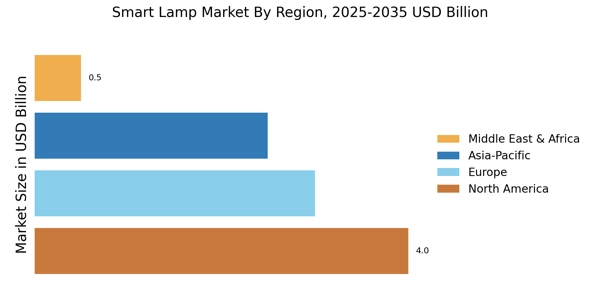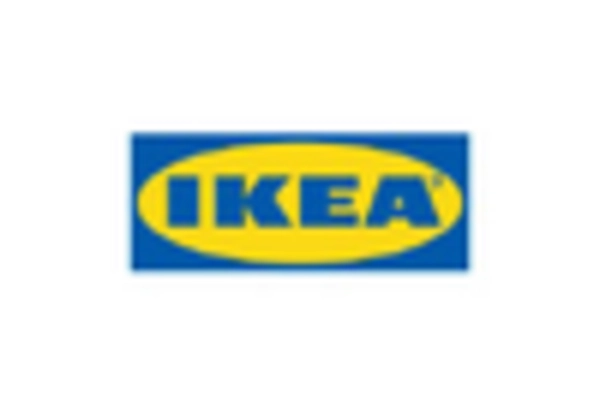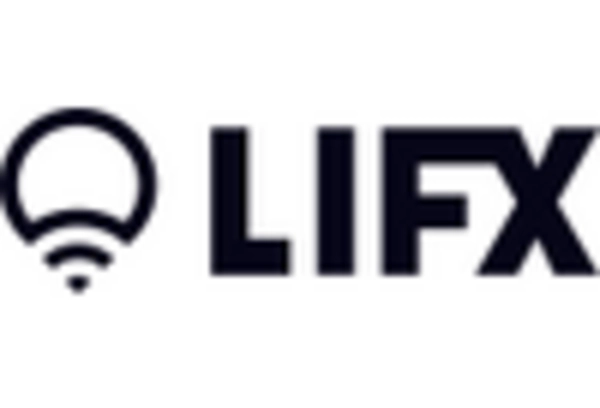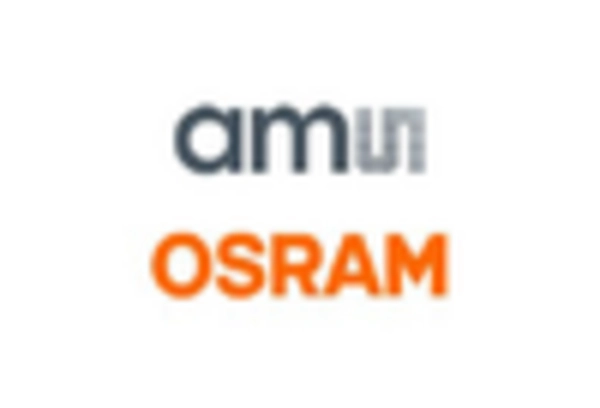Technological Advancements
The Smart Lamp Market is experiencing rapid technological advancements that enhance functionality and user experience. Innovations such as voice control, mobile app integration, and compatibility with various smart home ecosystems are becoming increasingly prevalent. These advancements not only improve convenience but also expand the market's appeal to tech-savvy consumers. According to recent data, the integration of artificial intelligence in smart lamps is projected to increase user engagement and satisfaction. As a result, manufacturers are investing heavily in research and development to create more sophisticated products, which is likely to drive market growth in the coming years.
Rising Demand for Energy Efficiency
The Smart Lamp Market is witnessing a surge in demand for energy-efficient lighting solutions. Consumers are becoming more environmentally conscious and are actively seeking products that reduce energy consumption. Smart lamps, which often utilize LED technology, are designed to consume less power while providing superior illumination. Market data indicates that energy-efficient lighting solutions can reduce energy costs by up to 80% compared to traditional incandescent bulbs. This growing awareness of energy efficiency is prompting manufacturers to innovate and offer products that not only meet consumer needs but also align with sustainability goals, thereby propelling market growth.
Enhanced Focus on Health and Well-being
The Smart Lamp Market is increasingly focusing on health and well-being, as consumers become more aware of the impact of lighting on their physical and mental health. Smart lamps that offer features such as circadian lighting, which adjusts color temperature based on the time of day, are gaining popularity. Research indicates that proper lighting can improve mood, productivity, and overall well-being. As consumers prioritize health-conscious choices in their homes, the demand for smart lighting solutions that promote a healthier lifestyle is expected to rise. This trend presents a significant opportunity for growth within the Smart Lamp Market.
Increased Adoption of Smart Home Devices
The Smart Lamp Market is benefiting from the increased adoption of smart home devices. As households integrate more smart technologies, the demand for compatible lighting solutions rises correspondingly. Smart lamps that can be controlled remotely or programmed to operate in conjunction with other smart devices are becoming essential components of modern homes. Recent statistics suggest that the smart home market is expected to grow significantly, with lighting solutions playing a crucial role in this expansion. This trend indicates a promising future for the Smart Lamp Market, as consumers seek to enhance their living environments with interconnected devices.
Growing Urbanization and Lifestyle Changes
The Smart Lamp Market is influenced by growing urbanization and changing lifestyles. As urban populations increase, there is a corresponding demand for innovative lighting solutions that cater to modern living spaces. Smart lamps offer versatility and adaptability, making them ideal for urban dwellers who often face space constraints. Additionally, the shift towards remote work and flexible living arrangements has led to a greater emphasis on creating comfortable and efficient home environments. This evolving lifestyle landscape is likely to drive the demand for smart lighting solutions, positioning the Smart Lamp Market for continued growth.

















Leave a Comment